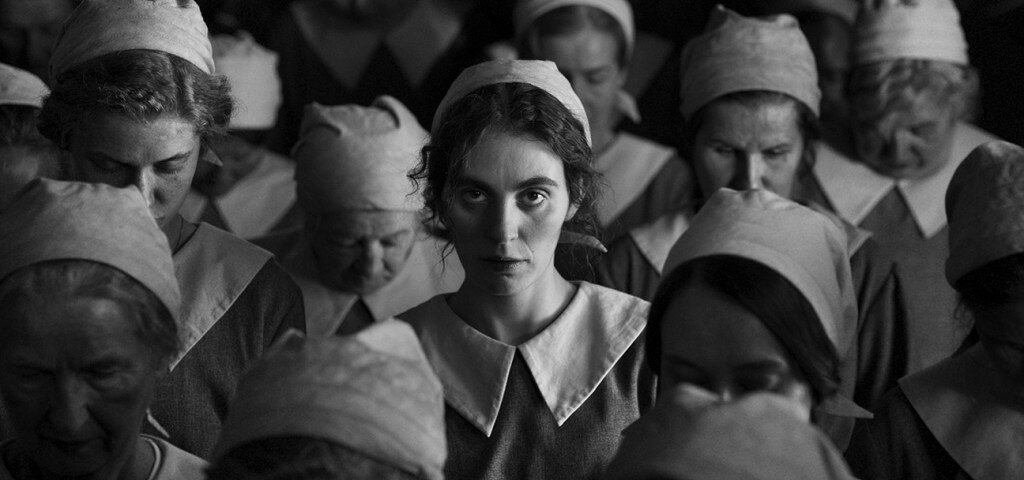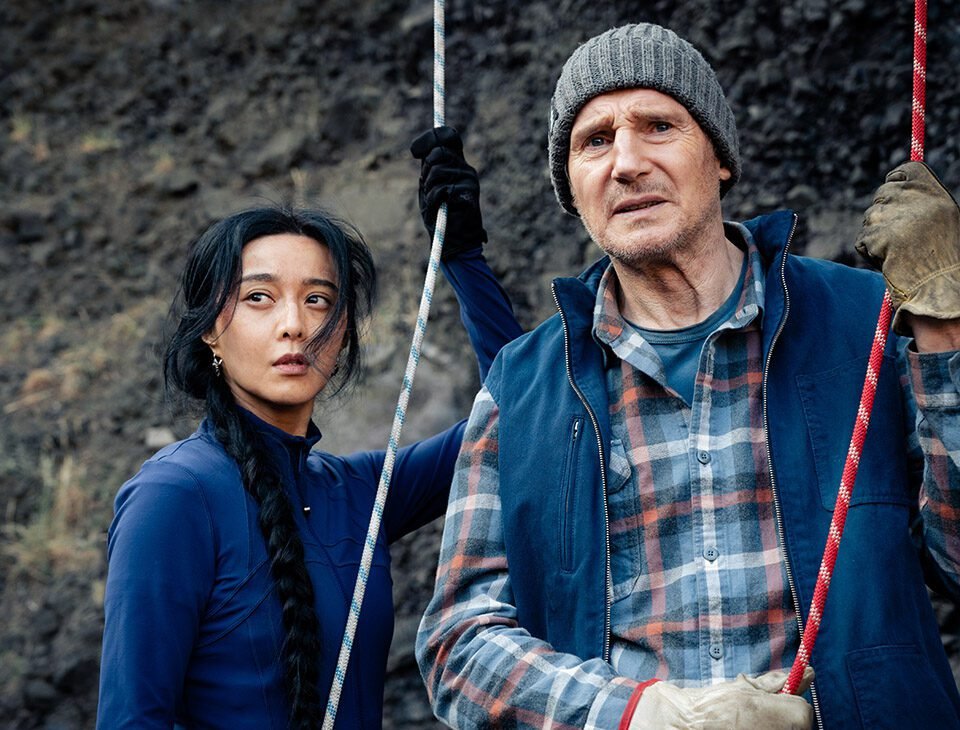


‘The Damned’ Review: An Immersive Civil War Drama That Whisks Us Into America’s Troubled Past
May 21, 2024


‘Furiosa: A Mad Max Saga’ Review: Anya Taylor-Joy and Chris Hemsworth in George Miller’s Fitfully Propulsive ‘Fury Road’ Prequel
May 22, 2024The Palme d’Or competitor from Magnus von Horn centers on the vulnerability of pregnant women at a time when abortion was illegal and other options few and far between.
The Girl With the Needle
Piercingly sad.
Like one of those fiendish knots that tighten the more you squirm, director Magnus von Horn’s Cannes competitor The Girl With the Needle builds to a devastating climax, taut as piano wire.
Shot digitally, in black and white and using a claustrophobic 3:2 ratio by rising cinematographer Michal Dymek (A Real Pain, EO), the film has the haunted, eerily still poise of antique photographs, an aesthetic that will delight cineastes but may prove a hard sell commercially, especially given the grimness of the topic.
Other filmmakers might have seen an opportunity to exploit the film’s true crime bona fides to the hilt by making another figure in the story the protagonist. Instead, von Horn, whose last film Sweat also focused on a young woman coming apart at the seams, selects a troubled yet sympathetic everywoman as his point of entry. As written in the screenplay by von Horn and Line Langebek, Karoline could easily come across as unsympathetic, even a little cold. But Sonne’s performance balances that out by emphasizing Karoline’s childlike naivety, her relatable sensuality and open-hearted tendency to trust others — the last a quality that leads to her downfall. Sonne even looks a little like an adolescent, with her very slight frame and Karoline’s tendency to dress in random, self-assembled clothes like a doll’s wardrobe. But there is a fierceness in her too, a strength of character that makes her ultimately admirable for all her faults.
That inner strength is palpable in the opening scenes as we see Karoline angrily arguing with her landlady, who can’t let her stay anymore now that she’s weeks behind with the rent. Clearly, Karoline has been struggling financially for a while. Although she has a job working at a local clothing factory making uniforms (sewists and textile machinery geeks will be fascinated to see the workers operating vintage hand-cranked machines while standing up, all recreated on a stage set), she’s getting no income from her husband Peter who went off to fight for the allies in World War I and hasn’t been heard from in months. Karoline presumes he’s dead, but without a death certificate she can’t claim a widow’s supplementary income. She manages to barge into the office of the factory’s owner, Jorgen (Fjelstrup), and the handsome but weak-willed scion of the upper class is taken with her and coughs up a raise, enough to cover the costs of her filthy garret apartment on the cheating side of town.
Incidentally, the use of cobble-stoned locations in Poland and Sweden’s Gothenburg help to ground the film in an appropriately grubby urban setting, all winding ancient streets teeming with extras, peeling paintwork and factory gates like the ones visible in the Lumiere Brothers’ first films.
Around the time that Karoline realizes she’s pregnant and understandably fosters hopes that Jorgen will marry her, her actual husband Peter (Besir Zeciri) shows up out of nowhere, nearly unrecognizable due to horrific wounds on his face that he covers with a custom mask. Worried he will ruin her chances with Jorgen and angry he didn’t let her know he was still alive, Karoline sends Peter away. But it all goes wrong when Jorgen’s snobby upper-class mother (Benedikte Hansen) scotches the nuptials, leaving Karoline with the choice between the knitting needle or childbirth out of wedlock.
The screenplay makes each step feel inevitable, but there’s still enough suspense that it seems a shame to spoil it by giving away what happens next. Nevertheless, it’s vital to know that in the back half of the movie Karoline gets drawn into the web of Dagmar Overbye (redoubtable Danish star Dyrholm), whom von Horn chillingly but entirely accurately compares in the press notes to a witch in a fairy tale. Always accompanied by her ethereally blonde seven-year-old daughter Erena (Avo Knox Martin), Dagmar appears to offer Karoline a lifeline and film viewers unfamiliar with the source story might read her at first as one of those noble older women who help out young women in need in unwanted-pregnancy stories like this. Be warned: she is not.
Editor Agnieszka Glinska’s well-measured cutting and van Horn’s control of the story skillfully build up to the story’s final horrors. Like a fairy tale, the final reveal feels somehow unsurprising, but still a shock. Dyrholm’s contribution to maintaining the suspense is not to be underestimated. Her Dagmar is alternately charming and ruthless, clearly a woman scarred by her own experiences, her pleasant matronly face a mask disguising the bestiality under the skin. The fact that her narrative mirror image, Peter — who ends up becoming a freak in a local circus — turns out to be the only unequivocally noble soul here is a pleasing if somewhat on-the-nose bit of storytelling balance.





